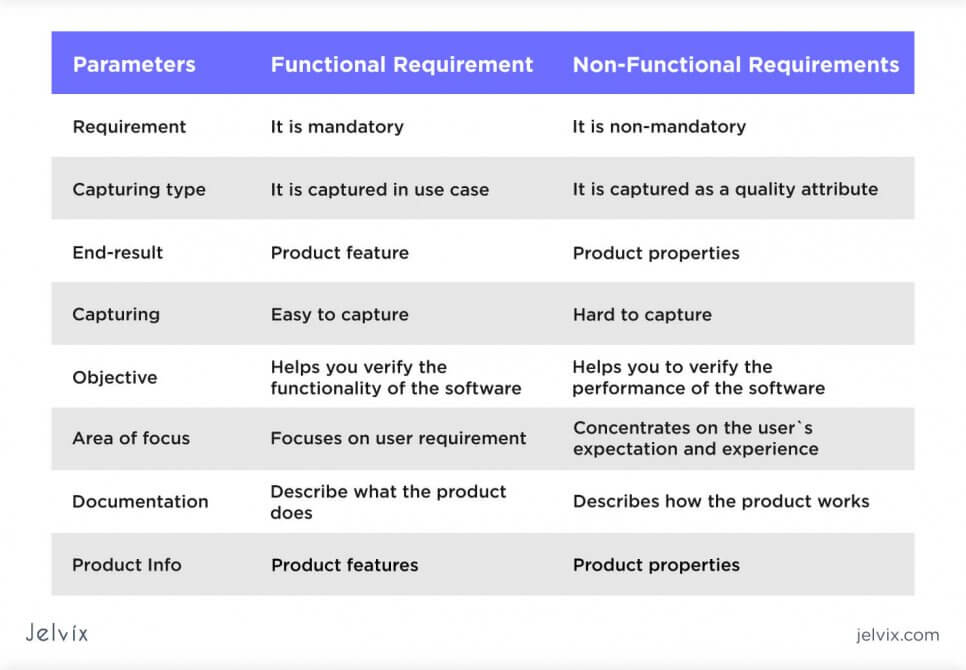
Still, while it does work, the result can be unacceptable or unsatisfactory system performance.
#Non functional requirements software
In most cases, software can perform its intended purpose even when it does not meet its nonfunctional requirements. Nonfunctional requirements define the effectiveness, usability and user experience (UX) for a software product they typically don't affect the underlying system functionality. "The whole system must pass Section 508 accessibility requirements." Software nonfunctional requirementsĪ nonfunctional requirement is a goal or stipulation that describes how a software system must work or perform. "The software must be integrated with the current banking API." "The software must validate customers against the in-house contact management system." Some other functional requirement examples include: For example, software might demand interoperability or be designed to meet prevailing business standards. There are countless other examples of functional requirements that cover countless other objectives.

This requirement stipulates that the software can export content into tools that academic users often work with, such as EndNote or Zotero. If the software does not provide the intended behavior, it is not functioning properly, and will not meet its intended goals.Ī functional requirement defines what a system must, or must not, do. Through functional testing, they apply specific inputs intended to check a function and elicit an expected output. QA engineers can write a set of deliberate test cases for each function. Well-documented functional requirements directly influence software testability.

When a development team collects and organizes functional requirements, it defines the system.

Two of the most important and commonly used requirements types are functional and nonfunctional software requirements.


 0 kommentar(er)
0 kommentar(er)
